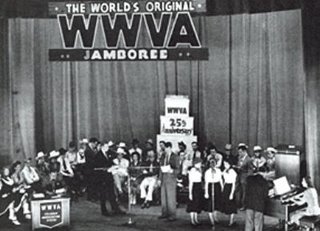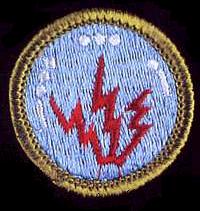I bumped into Shorty Fincher before, reading about Lucky Lang. Shorty was actually named Luther Clark “Shorty” Fincher and he was born in 1899 in Iukia, MS according to his biography in this song book. I am aware of one other Fincher song book and it's dates with a signature to 1941. [SOURCE] At that time he was on WORK in York, PA. I suspect my song book is the older of the two, being more plain, having possibly a 1937 or 1938 publication.
As is often the case his obituary reveals more information than any other source. He died in 1958 and was 58 years old so his year of birth is accurate. Had he lived to the following November he'd have been 59. At the time he was operating Valley View Park in Hallam, PA. He was also a DJ on WGCB in Red Lion. The obit is probably the source for the alsobooks.com information stating the following
"Fincher came to York county in 1940, and his large car with steer horns on the radiator soon became a common sight. For a time he had a music group called Shorty Fincher and his Prarie Pals. He was heard on WORK and WNOW radio in his early years."It gives the town he was born in as Iuki, MS which is not what the song book says. I am assuming they're both spelling variations of Iuka, MS. Regardless the family moved to Anniston, Alabama, when he was one year old. He was survived by his wife Alexandra "Sallie" Fincher, four sons: James, Fred, and Donald; and a daughter Nellie named for his mother. the obit goes on to name all his siblings but hiding his sisters names behind their husbands as a Mrs. so they're not worth including. it was more interesting that many still lived around Anniston, AL but some were local to York or Philadelphia. More here.
One of 14 brothers he and two others started a band, The Cotton Pickers, in 1932. The Cotton Pickers included Shorty, his brother Hamilton (who performed as the comedian "Rawhide"), Alexandra Kaspura as "Lonesome Valley Sally," Florence "Yodeling Flo" Morosco, Dolph Hewitt and Ted Buchanan on guitar. The Cotton-pickers relocated to Pittsburgh, Pennsylvania, where they had a regular program on KQV-AM. Around then he recorded four sides for Columbia records as the "Crazy Hillbillies Band". [SOURCE] That name is due to a sponsorship from Crazy Water Crystals. He also recorded under the name Colonel Jack [Brinkley] and Shorty's Crazy Hillbillies, as well as six other sides for Okeh.
If you didn't know, crazy water crystals were a laxative. It was disturbingly popular. The company sponsored radio programs all over the South. The Crazy Mountaineers, Dick Hartman's Tennessee Ramblers, The Crazy Hickory Nuts, The Lone Star Quartet, Shorty's Crazy Hillbillies, The Crazy water Crystal Gang, [SOURCE] and the Crazy Water Crystal Program itself. Their ads and sponsored programs were aired on WBAP, WPTF, WBT, KRBC and several border blasters as well.
From that 1932 group Dolph Hewitt (aka Adolph Edward Hewitt) went on to a career of his own. He got into WWVA at the age of 16, over a year before Fincher. His first performed with Frankie More and his Log Cabin Gang. In the 1940s Dolph moved to St. Louis and performed at KMOX. That went well and he graduated to an ABC Radio Network slot with Pappy Cheshire’s Ozark Champions. In 1946 he joined Radio Station WLS with the Sage Riders on the National Barn Dance. He recorded several sides for Kapp and Victor records. More here.
Back in Pittsburgh, Hamilton Fincher was hired by Doc Williams as a comedian for his band, the Border Riders. Williams and the Border Riders went to Wheeling, West Virginia, along with Hamilton. Shorty Fincher followed them shortly thereafter with the Cotton Pickers and joined the WWVA Jamboree, which was broadcast on Saturday nights over WWVA from Wheeling. Through WWVA, Fincher also co-hosted his own show, the Shorty & Sally Fincher Jamboree Show, with Lonesome Valley Sally.
Some sources report that Shortly was operating an amusement park at Dreamers Beach in Delaware in 1949. But a 1949 issue of Billboard reports that the first Wisconsin folk music park began operation that May in West Bend, WI. That's about 30 miles from Milwaukee. The issue specifically says that "Valley View Park, which was operated last year by Shorty Fincher, will run this year with Nemo Lippert, of the Range Riders." That note would put Shortly in Wisconsin in 1948. Nemo Lippert was another country artist from PA. His range Riders performed on WNOW in York. He was later on WTPA-TV in Harrisburg.
In this part of their career, Shorty and Sallie operated their own amusement park in Hellam, PA. Purportedly the park became more of a flea market in the 1960s after Shorty died. In 1953 The Emmitsburg Chronicle of Maryland puts Shorty Fincher and Sallie at a Firemen's carnival and ox roast. The York Dispatch has them at another Firemen's carnival in July of 1954. They were playing the country version of the oldies circuit, but I'm sure they had a good time. I found one obituary that stated Shorty was a disc jockey and salesman for radio station 1440 WGCB-AM in Red Lion, PA. The station signed on in 1950 so that narrows down the time frame. While Shorty died in 1958, Sallie lived until 1987 operating the park for decades after his passing. Joan Concilio of the York Dispatch has been writing a series of articles about the park's history that are highly recommended. [LINK]





.jpg)













 1. Explain what radio is. Include in your explanation: the differences between broadcast radio and hobby radio, and the differences between broadcasting and two-way communicating. Also discuss broadcast radio and amateur radio call signs and using phonetics.
1. Explain what radio is. Include in your explanation: the differences between broadcast radio and hobby radio, and the differences between broadcasting and two-way communicating. Also discuss broadcast radio and amateur radio call signs and using phonetics.

